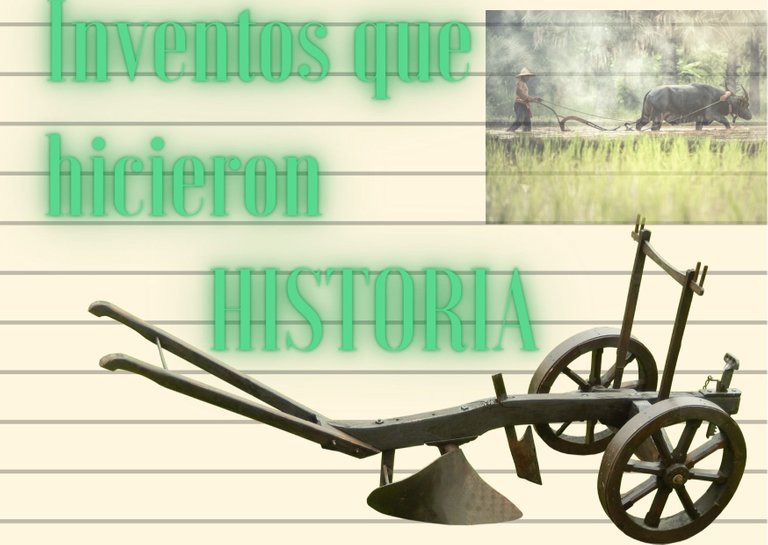
Image by the author. Edited in Canva. February, 2022/

History is part of humanity, to enter it is to look at and admire human intelligence since ancient times, as it shows, according to each era, the advances devised by the human mind to favour and improve the quality of life of citizens in a given region.
Aquí enlace para las bases del concurso. Invito a participar @ilsepalma1616, @daniel2001, @brujita18
Important contest of the #MomentosdeHistoria Community, which leads us to investigate, review everything that has been considered as an invention in the evolution of society. If you want to participate, I leave
Here link to the contest rules. I invite @ilsepalma1616, @daniel2001, @brujita18 to participate.

Arado
Fuente/Source
Plough
A plough is a tool used in agriculture to create furrows in the soil and to plough the land. The plough can be moved by mechanical action or by the power of an animal.
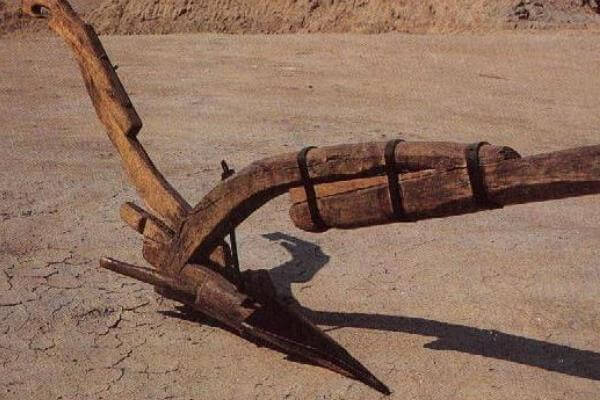
Fuente/Source
The plough was considered a simple but revolutionary implement. The first news about this implement comes from Mesopotamia more than 5,000 years ago, this invention was presented as a wood to which another vertical wood was fixed and which was dragged by a pack animal.
It consisted of attaching this mechanism to an animal, which allowed much more work to be done than if it were done by a man using the strength of his arms. In Mesopotamia in the 4th millennium BC, we find the first representation of a primitive plough without a front set.
Some Sumerian cylindrical seals and pictograms show an instrument made of two timbers supported by a cross bar, whose extremities end in a coulter or blade, which has a rudder complemented by a seed deposit, and is pulled by oxen or zebus.

El arado también evolucionó.
The plough also evolved.
The plough was an evolution of an even simpler tool: the hoe. The idea is simply to turn the soil. As simple as that. But in doing so, the soil is aerated, it becomes more porous and better able to absorb rainwater, making it easier for the roots of the plants we are going to make grow.
This rudimentary tool was soon improved. A handle was added to guide it and the wood was bent to make it fit better into the soil. But the great advance was made in the Mediterranean: the Roman plough is the basis of all those that have been invented since then.
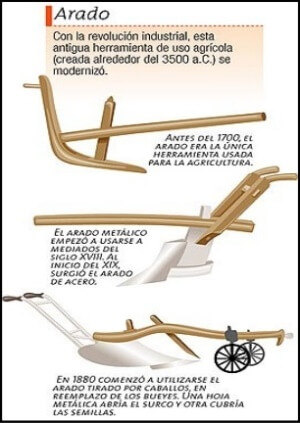
Fuente/Source

According to research, the Greeks made use of this equipment before the Romans, and it was during the Roman Empire that its use became widespread throughout Europe.
The basic structure of the plough was maintained for a long time, until the 9th century, when a metal point was added to improve its strength. Until then, humans, ever so practical, preferred to use metals mainly for making weapons rather than for farming.
With the arrival of the Normans, the plough had another important improvement: they put wheels on it. This made things easier, as it is not the same to drag something as to roll something.

Egipto
Egypt
The Egyptian plough has a piece where the coulter or blade, known as a tooth, is embedded. However, it does not appear to have been fitted with a piece of metal or stone, as there is no graphic representation of it.
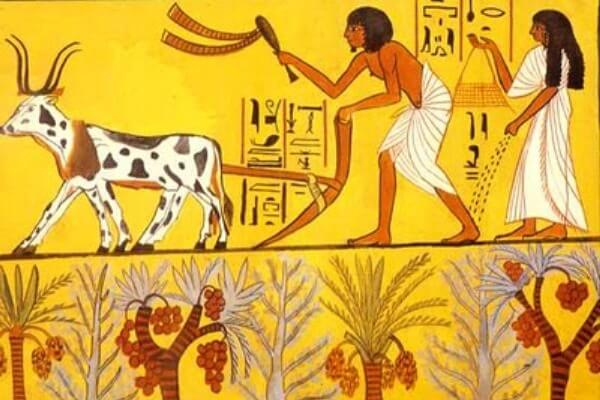
Fuente/Source

Grecia antigua
Ancient Greece
Hesiod, the great Greek poet of the 8th century BC, left us in his work The Labours and the Days a poetic-realistic description of the life of the peasant in ancient Greece.
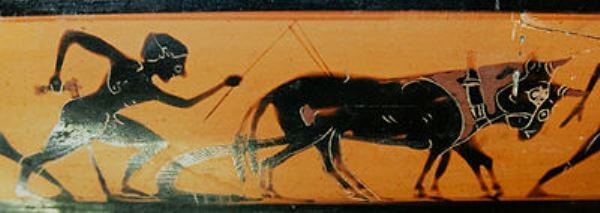
Fuente/Source

Europa
Europe
Bronze Age Europe used the plough for ploughing. In the cave engravings discovered in France and Sweden depicting ploughs (around 3500 BC), the ploughs do not have two handles but only one.

En Venezuela
In Venezuela
At present, old agricultural production systems are preserved in certain states, and these form traditional agriculture:
It depends on natural factors such as rainfall, soil fertility, family labour, human or animal power (ploughing) is used in agricultural work.
Artículos que apoyan este post
Articles that support this post
Fuente/Source








Gif
@germanandradeg
@alarconr22.arte
Baners Fuente
Baners Source
Logos cortesía de:
@sound1music y @mayvileros
Logos courtesy of:
@sound1music and @mayvileros
Separadores
Fuente
Dividers
Source
Traductor DeepL
Translator DeepL


Antes que todo muchas gracias por unirte al concurso y ser parte de esta comunidad.
En cuanto al contenido que traes es muy bueno tanto en como te basas, lo describes desde varios ámbitos culturales hasta en la propia Venezuela, un contenido muy completo muy fácil de digerir y con una carga histórica muy buena, te felicito de ante mano, espero verte en los próximos concursos, saludos y que sigas haciendo historia.
Gracias @hive-126667
Saludos @mercmarg tienes razón, revisar nuestra historia es sumergirse en esa magnífica inteligencia para admirarla.Es impresionante con en su momento y si tanta tecnología lograron innumerables avances.
Interesante tu aporte. El uso de los animales de acuerdo al tipo de arado que necesitaban según lo que se iba a sembrar es impresionante.
La invención de la rueda fue definítivamente lo que vino a facilitar aún más el proceso.
Gracias por compartir.
Gracias @graciadegenios, así es la historia y como nos vemos en avances y de acuerdo a las generaciones que van pasando.
Abrazos
The rewards earned on this comment will go directly to the person sharing the post on Twitter as long as they are registered with @poshtoken. Sign up at https://hiveposh.com.
Excelente. Un aporte muy cronológico y muy bien sustentado. Una herramienta que dio pie para la transformación y el avance. ¡Gracias por compartirlo!
Si por eso me decidí por el, y en nuestro país se utiliza, para arar aquellos sitios que no pueden entrar máquinas, caso estado Mérida...aunque no pude dar con los sitios exactos donde se realiza...y también por razones económicas muchas familias lo usan.
Gracias, saludos
Yo de niño amaba ver la yunta de bueyes arando y hace dos años que estuve en el páramo fue lo que más disfrutñe
Que bueno
Estas recibiendo un voto por parte del proyecto "Sound Music" (@music1sound) y este post fue seleccionado para el reporte de curación diaria. Contáctenos para saber más del proyecto a nuestro servidor de Discord. Si desea delegar HP al proyecto: Delegue 5 HP - Delegue 10 HP - Delegue 20 HP - Delegue 30 HP - Delegue 50 HP - Delegue 100 HP.
Gracias mi querida @mercmarg. Me gusta mucho la historia, saber nuestros orígenes y de donde salió aquello o que inventos revolucionaron el mundo. Veremos que se me ocurre, ¡Un abrazo enorme!
Mi estimada Mercedes (@mercmarg),
este contenido tuyo con el que participas en el concurso está demasiado bueno.
Tomaste una herramienta que a veces pasa por desapercibida y es tan indispensable sin importar su tecnología hoy en día.
Tu contenido nos regala muy bien, datos de historia, y nos instruye mucho para quienes no estábamos documentados al respecto.
Estos concursos me fascinan, porque se aprende mucho.
Mil felicidades amiga y cónchale, gracias por compartir tu investigación y conocimiento.
Bendiciones para la familia.
Gracias amigo @germanandradeg, si a pesar que el arado tiene miles de años desde que se ideó aún es utilizado en diversas zonas de nuestro país.
Saludos